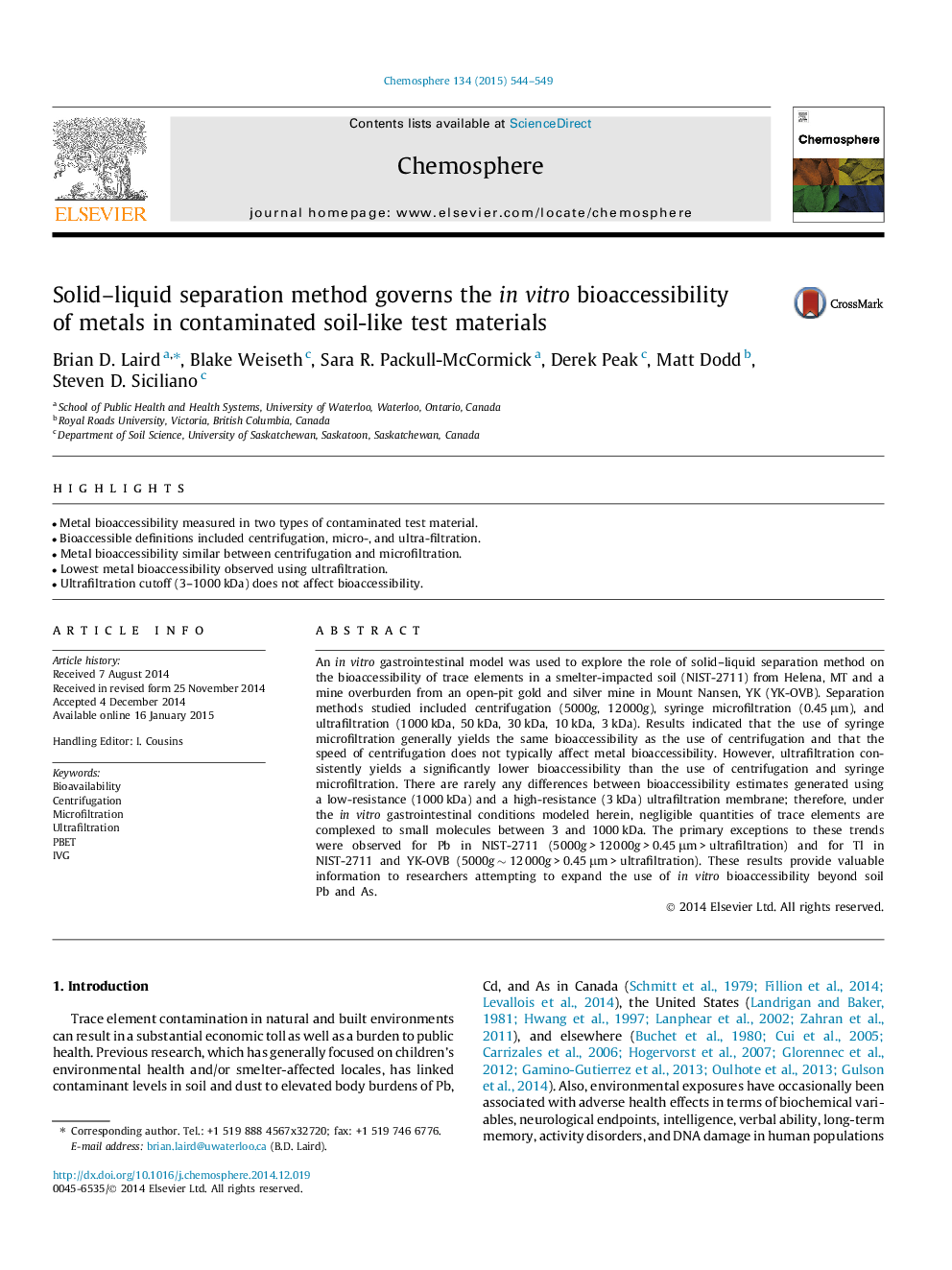| کد مقاله | کد نشریه | سال انتشار | مقاله انگلیسی | نسخه تمام متن |
|---|---|---|---|---|
| 6307762 | 1618837 | 2015 | 6 صفحه PDF | دانلود رایگان |
عنوان انگلیسی مقاله ISI
Solid-liquid separation method governs the in vitro bioaccessibility of metals in contaminated soil-like test materials
ترجمه فارسی عنوان
روش جداسازی جامد و مایع، قابلیت زیست¬پذیری درون آزمایشگاهی فلزات را در مواد آزمایشی آلودگی خاک کنترل می کند
دانلود مقاله + سفارش ترجمه
دانلود مقاله ISI انگلیسی
رایگان برای ایرانیان
کلمات کلیدی
موضوعات مرتبط
علوم زیستی و بیوفناوری
علوم محیط زیست
شیمی زیست محیطی
چکیده انگلیسی
An in vitro gastrointestinal model was used to explore the role of solid-liquid separation method on the bioaccessibility of trace elements in a smelter-impacted soil (NIST-2711) from Helena, MT and a mine overburden from an open-pit gold and silver mine in Mount Nansen, YK (YK-OVB). Separation methods studied included centrifugation (5000g, 12 000g), syringe microfiltration (0.45 μm), and ultrafiltration (1000 kDa, 50 kDa, 30 kDa, 10 kDa, 3 kDa). Results indicated that the use of syringe microfiltration generally yields the same bioaccessibility as the use of centrifugation and that the speed of centrifugation does not typically affect metal bioaccessibility. However, ultrafiltration consistently yields a significantly lower bioaccessibility than the use of centrifugation and syringe microfiltration. There are rarely any differences between bioaccessibility estimates generated using a low-resistance (1000 kDa) and a high-resistance (3 kDa) ultrafiltration membrane; therefore, under the in vitro gastrointestinal conditions modeled herein, negligible quantities of trace elements are complexed to small molecules between 3 and 1000 kDa. The primary exceptions to these trends were observed for Pb in NIST-2711 (5000g > 12 000g > 0.45 μm > ultrafiltration) and for Tl in NIST-2711 and YK-OVB (5000g â¼Â 12 000g > 0.45 μm > ultrafiltration). These results provide valuable information to researchers attempting to expand the use of in vitro bioaccessibility beyond soil Pb and As.
ناشر
Database: Elsevier - ScienceDirect (ساینس دایرکت)
Journal: Chemosphere - Volume 134, September 2015, Pages 544-549
Journal: Chemosphere - Volume 134, September 2015, Pages 544-549
نویسندگان
Brian D. Laird, Blake Weiseth, Sara R. Packull-McCormick, Derek Peak, Matt Dodd, Steven D. Siciliano,
